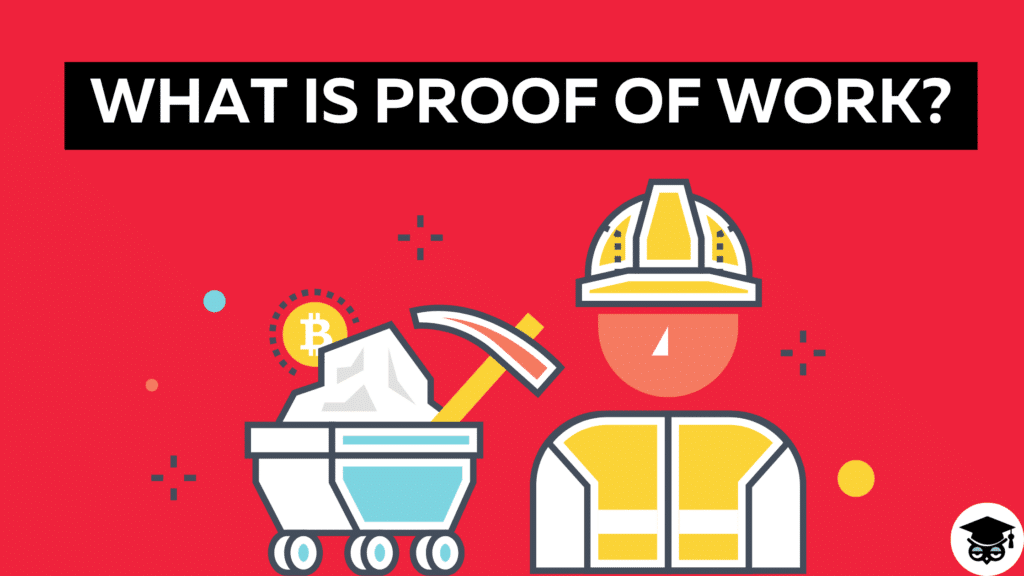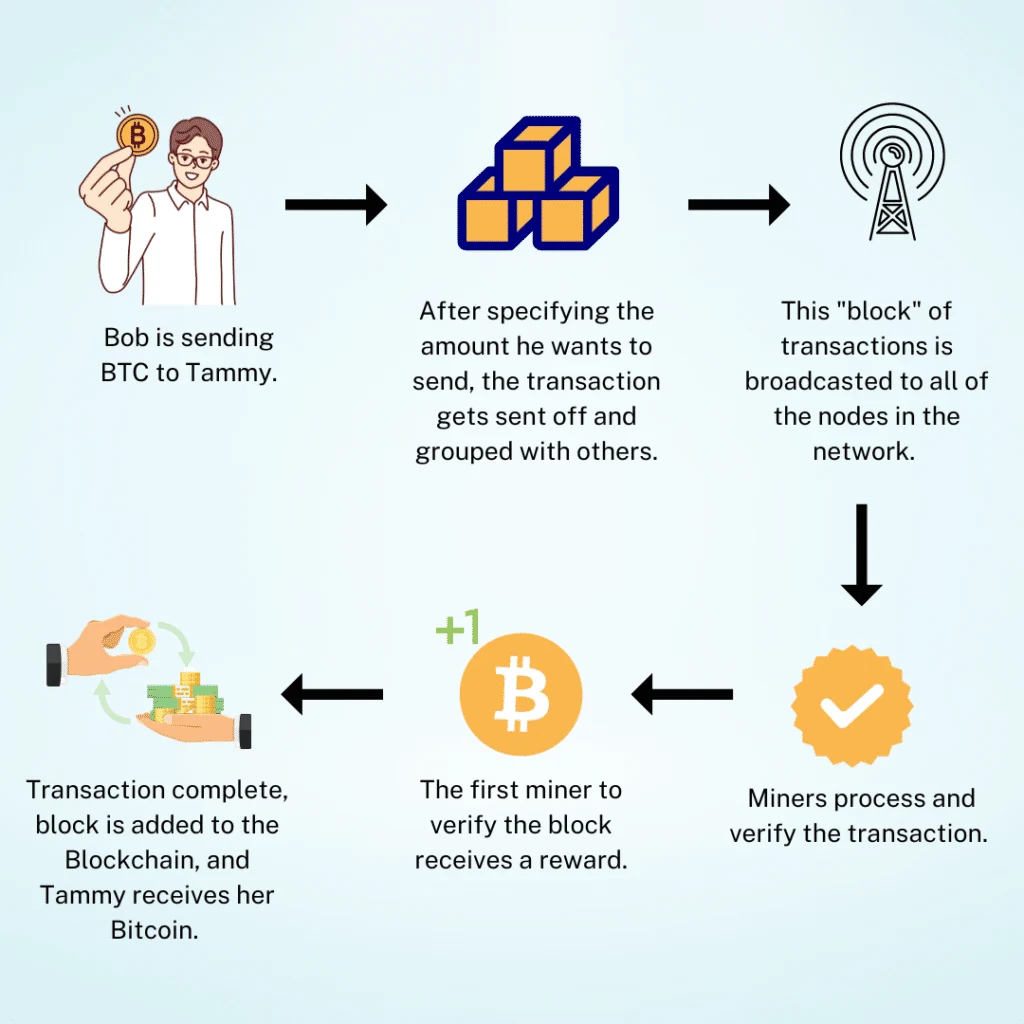What is Proof of Work?
Proof of Work (PoW) is a type of consensus mechanism used by specific blockchains.
The Long Definition
PoW is a technique that is used to verify the accuracy of transactions being added to the protocol. Through it, nodes (computers) on the network ensure data integrity before it is written to the blockchain.
PoW is the oldest consensus mechanism in the crypto world. Today, it is used by Bitcoin, Bitcoin Cash, Litecoin, Dogecoin, and Monero blockchains.

History of Proof of Work
The concept behind PoW dates back to 1993. It was first introduced by Moni Naor and Cynthia Dwork in a paper titled “Pricing via Processing or Combatting Junk Mail.” The idea was that if there was a computational cost to sending email, it would be enough to deter spammers.
However, the concept was not really utilized until 2009. This is the year that Satoshi Nakamoto launched the Bitcoin blockchain.
Bitcoin is a distributed ledger created to enable peer-to-peer financial transactions. Being decentralized, it relies on participants to secure the network. It is crucial that these participants only write valid transactions. So, Satoshi implemented a mechanism that places a computation cost on verifying and adding new blocks.
This is what became known as Proof of Work (PoW).
Understanding Proof of Work
Let’s say you’re sending bitcoins (BTC) to your friend. When you initiate the transaction, it is grouped together with other transactions happening at the same time. This group is known as a block. Before the block is added to the blockchain, participants, known as miners, process and verify it.
The process of verification of transactions is guided by the PoW consensus mechanism.
How Does PoW Work?
Miners must prove that they can be trusted before being allowed to write blocks. This involves solving complex cryptographic puzzles which require a lot of computational power to solve. Computational power equals work.
By doing this work and shouldering the cost that comes with it, miners prove that they have the network’s best interest at heart. This is why it’s called Proof of Work.
Note that miners compete to solve these puzzles. The network assumes that the first miner to find the solution has put in the most work. Therefore, it lets them write the block to the blockchain and rewards them for it.

Elements of Proof of Work:
Proof of Work consists of several elements– miners, hash, and nonce.
Miners are the participants responsible for verifying blocks. They use powerful computers to solve cryptographic puzzles. For their work, miners receive block rewards as compensation. These rewards consist of newly minted cryptocurrencies.
A hash is a unique string of alphanumeric characters. It is obtained when data is passed through a hashing function. In crypto, this data consists of the data and number of the block to be verified, the previous block’s hash, and the nonce.
PoW requires miners to solve the hash by guessing the nonce. Nonce is an acronym for the phrase “number used only once.” It’s usually the missing piece of the puzzle when solving for the hash.
The first miner to solve the hash receives rewards for that block. But before that happens, other miners must verify. They do so by passing the necessary data through the hashing function. If they all return the required hash, they’re said to have achieved consensus. The block is then added to the chain.
Proof of Work vs. Proof of Stake
Proof of Stake (PoS) is the other popular consensus mechanism. Unlike PoW, PoS doesn’t require participants to ‘work’ in order to verify transactions. Instead, they must have a certain stake in the network.
Only those with a stake are allowed to verify transactions and write blocks. This is because the consensus mechanism assumes that having a stake will encourage them to behave in the network’s best interest. These participants are known as validators.
Validators prove their stake by locking a certain amount of crypto in the network. They are then chosen at random to verify transactions and are rewarded for it by receiving a portion of the transaction fees.
| Proof of Work | Proof of Stake |
| Blocks of transactions are verified by miners | Blocks of transactions verified by miners |
| Miners prove their trustworthiness by dedicating a lot of computational power and energy to verify blocks | Validators prove their trustworthiness by locking a certain amount of crypto in the network |
| Miners are rewarded in newly minted cryptocurrencies | Validators are rewarded by receiving a portion of the transaction fees |
Criticisms of Proof of Work
Miners race to solve the hash. This makes PoW very competitive.
Basically, the miner with the most computing power wins. This forces miners to invest in increasingly powerful equipment known as Application-Specific Integrated Circuit (ASIC) miners.
ASICs are very expensive. They also consume a lot of energy. This makes PoW a very energy-intensive consensus mechanism. It’s also bad for the environment.
For instance, every year, the Bitcoin blockchain uses enough electricity to power a small country. And as a secondary consequence, it has a very large carbon footprint.
So, many blockchains prefer to use Proof of Stake. PoS isn’t competitive by nature and doesn’t require participants to solve hard cryptographic puzzles. Therefore, it requires significantly less computational power. This makes it much more energy-efficient than PoW.
